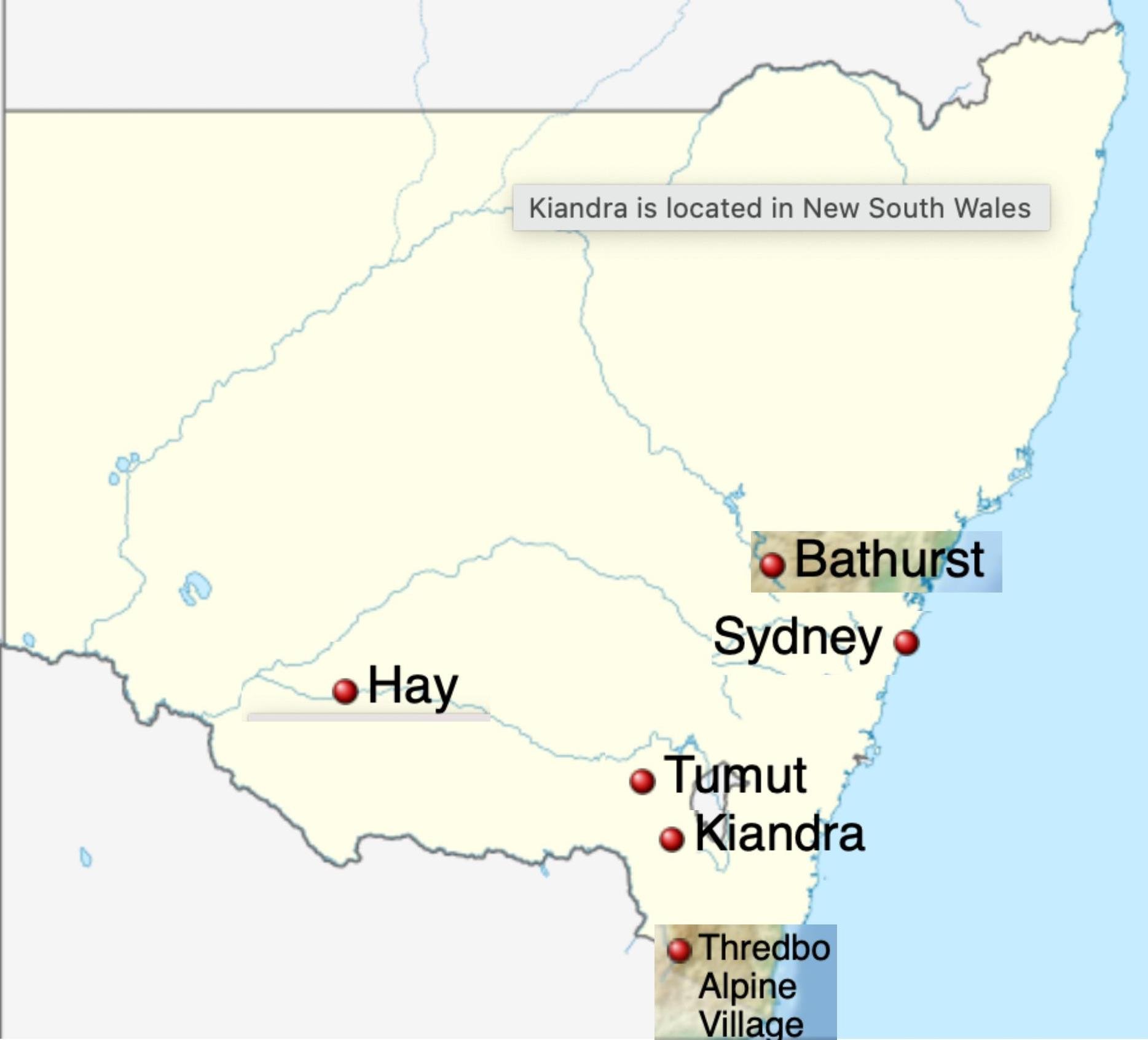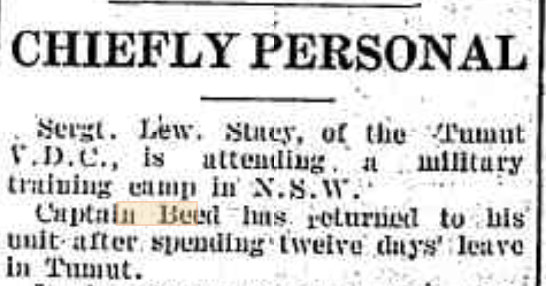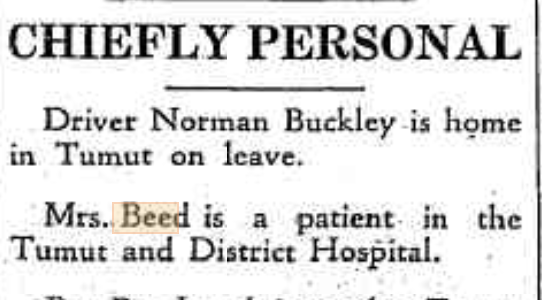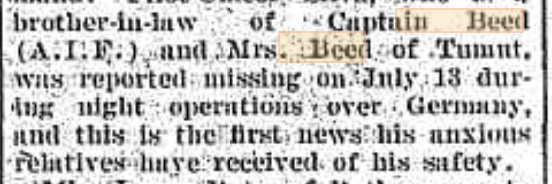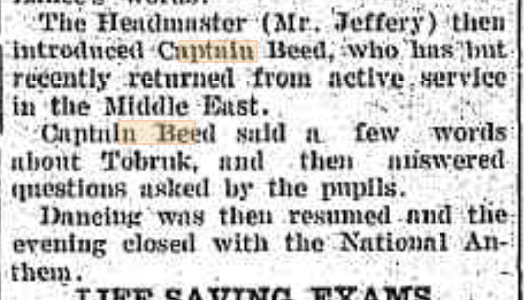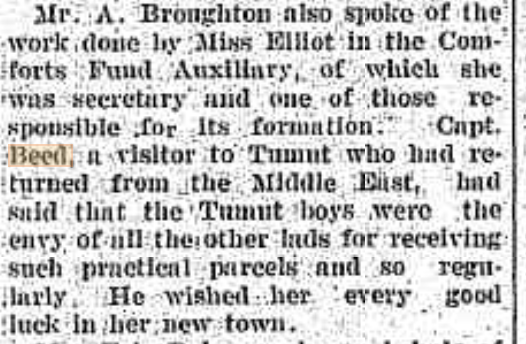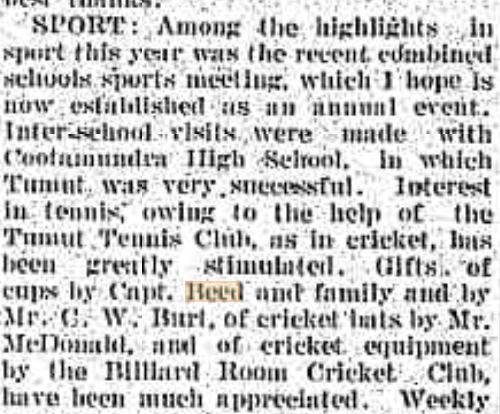The Remarkable Professor Jakelin Troy and Belonging to Country - Part 2
In Part 1 of our investigation into the remarkable story of University of Sydney’s Indigenous Professor, Jakelin Troy we covered the Professor’s claim that,
‘One piece of research says he [Banjo Paterson’s, The Man from Snowy River] was my father’s great uncle called Jim Troy.’ - Man from Snowy River had to be Aboriginal, says author, SMH, 1 September 2021
Our research has shown that Professor Jakelin Troy is totally wrong in making this claim. She is not related at all to Jim Troy, one of the prime suspects on whom Banjo Paterson based some, or all, of his Man from Snowy River character. She is ‘just making this up’.
In this Part 2 of our investigation, we will follow the family tree of Indigenous Ngarigu woman, Professor Jakelin Troy with regard to her mother’s and grandmother’s ancestries. These two women, Professor Jakelin Troy tells us in a 2021 Facebook post, share her love for ‘our’ Ngarigu ‘Country’:
Figure 1 - University of Sydney Indigenous Ngarigu woman, Professor Jakelin Troy’s facebook post in 2021. The reader is led to believe that these three women ‘knew’ and ‘loved’ their ‘Country’ in an Aboriginal sense.
Figure 2.- Jaky Troy and her mother Shirley Troy at the Old Masters exhibition at the National Museum of Australia, December 8, 2013. Photo Credit: Lyn Mills, Source.
Shirley Troy’s Indigenous Connection to Ngarigu Country
In this section, we will follow Professor Troy’s mother’s family tree to enlighten the reader as to why Professor Troy, her mother Shirley and grandmother all had such a deep love of ‘Country’, occupied by their Ngarigu ancestors for thousands of years, or so we all thought.
Shirley Troy’s (the Professor’s mum) family tree is outlined in Figure 3. Further details on the family tree members are located in the Further Reading section at the end of this post.
Figure 3 - The ‘Beed’ branch of the family tree of Indigenous Professor Jakelin Troy’s mother, Shirley Beed
Professor Troy acknowledges that this is her family tree of Beeds - in her 1994 PhD thesis she thanked her grandfather Henry Beed and, in her Facebook post of 2021 in Figure 1 above, she confirms that her grandmother was born 116 years before on 12 January 1905 (this is the Sylvia Elizabeth Olive Speer in the Figure 3 family tree above).
At this stage of our investigation our researchers were getting confused. If Professor Troy is correct that she, her mother and grandmother were of Ngarigu Country in the Aboriginal sense - that is, they had deep ancestral and cultural ties to the land and ‘knew it all’ - then how is it that the records show that none of them were actually born on Ngarigu Country? (Professor Troy was born at King George V hospital in Sydney, her mother Shirley also in Sydney and grandmother Sylvia in Hay)
Figure 4 - Map of New South Wales with towns associated with Professor Troy’s family and ancestors. Only Tumut, Kiandra and Thredbo are within Ngarigu Country. Map Source - Wikipedia
So what is going on here our readers may ask? No-one in this family tree appears to have been born or died ‘On Country’. All the ancestors lead back to being immigrants from England within the span of a few generations.
These members hardly look like Indigenous members of ‘the world’s oldest living culture.’
After all we had been told by the University of Sydney and Indigenous Professor Jakelin Troy herself, this was a most surprising result. We could not see any real evidence that Shirley Troy had an Indigenous connection to Ngarigu Country. Perhaps we were missing something?
We decided to dig a little deeper into life of the Shirley Troy. Was she really a Ngarigu woman too, like the University of Sydney tells us her daughter is?
Figure 5 - Aboriginal tribal map section indicating what was believed to have been Ngarigo [Ngarigu] country, extending south of Canberra. Source - The Encyclopaedia of Aboriginal Australia. David Horton (ed.)
Shirley Troy’s Actual Connection to Ngarigu Country
The years 1942 and 1943 were critical times for eastern Australia during WWII and huge numbers of Australians volunteered for civil defence. In January 1943 there were 321,000 Australians listed as civil defence volunteers. Many other volunteers spent countless hours looking for Japanese aircraft and preparing land defences up and down the east coast and in the cities (Reference here).
Figure 6 - The Sydney University Regiment practises to repel an invasion of the south coast, c1940; some members of this militia unit went on to active service with the AIF. State Library of Victoria Argus newspaper collection H99.201/2428. Source.
Figure 7 - One of a series of photographs created by the ARP and Metropolitan Fire Brigade for publication in local papers, this image carries a caption giving detailed instructions to householders: … Every Australian should know what to do in an air raid … Keep your head down when in an open trench, upturned faces draw enemy fire. If there is room, lie right down on the floor. To avoid concussion, never lean against the walls of the trench. The open trench in your backyard may be 4 or 5 feet deep, 4½ feet wide at the top, tapering to 3½ feet wide at the bottom. A roof of corrugated iron covered with earth and built to specifications you can obtain from your air-raid warden converts the open trench into a shelter, giving greater protection. AWM 011522. Source.
Particularly terrifying were the threats caused by the Japanese mini-subs that ‘had attacked twenty-one ships and sunk eleven between Cairns and Gabo Island in the first 6 months of 1943. When the hospital ship Centaur was sunk on 14 May, the 268 lives lost with it represented the biggest loss from a Japanese torpedo in Australian waters’. The eastern suburbs of Sydney were also not immune to attack.
Figure 8 -Locals inspect damage caused to an eastern suburbs home by a shell fired from Japanese mother submarine I-24 on 8 June 1942, a week after its midget took part in the attack on Sydney Harbour. I-24 surfaced off the east coast just after midnight and fired ten shells into the suburbs of Rose Bay, Bellevue Hill and Woollahra. Only one of the shells exploded and no-one was killed, though several buildings were damaged. AWM 012594. Source.
Civil defence mobilisation extended as far as the high-country of NSW and Victoria, with large numbers of homeland defence volunteers beings enlisted in the high country.
Figure 9 - Country recruitment day for the Volunteer Defence Corps (VDC), c1942. The VDC took men who were unfit for combat in the regular forces, over the age limit or in reserved occupations, and trained them to gather information on enemy movements and to provide a measure of homeland defence. With a motto of 'Deny, Delay and Protect', members were prepared to defend airbases and industrial sites, demolish bridges and piers, construct roadblocks and engage in guerrilla warfare. State Library of Victoria Argus newspaper collection H99.201/1828. Source.
Some families, who had the opportunity, decided to flee Sydney to avoid the risk of attack by the Japanese, whether by sea invasion or aerial bombing. It seems that one such family with a familiar name to us did indeed relocate to the high country - to the small town of Tumut in the heart of Ngarigu Country where, to the best of their ability they tried to maintain a normal Australian family life.
On the 16th of March 1943 on the front page of the local newspaper, the Tumut and Adelong Times was printed the winning entry of the essay competition held at the recent Tumut Show. The First Prize entry was written by the 14-year old, Miss Shirley Beed, none other than Indigenous Professor Jakelin Troy’s mother.
It seems that the young Miss Shirley Beed and her family had had a different ‘lived experience’ to that which Sydney University’s Indigenous Professor Jakelin Troy is suggesting in her 2021 Facebook post (Figure 1). For, in her First Prize essay in 1943, we find Shirley Beed (later Troy) telling us that,
‘…Tumut was made known to ambitious settlers and many people turned south [from the Sydney district]. In 1830 the first white child to be born in the new locality was at Darbalara. The pioneers of these parts of the Colony were wonderful people, who make one proud to think they were our ancestors…The aboriginals were troublesome and savage and were always causing trouble.’
- Miss Shirley Beed, from paragraphs two and three in her essay on the front page of the Tumut and Adelong Times, 16 march 1943 (Fig.10).
Figure 10 - First paragraphs of 14-year old Miss Shirley Beed’s First Prize History Essay. Source: The Tumut and Adelong Times, Tue 16 Mar 1943, p1. Full essay here
This essay is quite a perplexing revelation. Indigenous Professor Jakelin Troy has led us to believe that she and her mother are proud Ngarigu women, but here is young Shirley telling us how proud she is of the early ‘pioneers of these parts of the Colony’, the ‘marvellous people, who make one proud to think that they were our ancestors.’ She also speaks of the Indigenous population in the third person, ‘the aboriginals were troublesome and savage and were always causing trouble’. That is, the reader understands Miss Shirley is not one of them.
To us, it appears as if Shirley Beed believes herself to be a descendent of the pioneers and not in any way a direct decent of the local Aborigines, the Ngarigu.
We know that this 14-year old essayist is our Shirley Beed because of the date of the newspaper article - 1943 - which means that she was born in 1928 or 1929, depending on her month of birth. We know Shirley Beed, Professor Troy’s mother was born in 1928. This provides corroborating evidence that the essayist is the Professor’s mother. We also know that there was only one Beed family living in the small town of Tumut in 1943, the family of the soldier Henry John Beed and his wife Sylvia Olive Beed, Shirley’s father and mother. They were the only Beed family who appeared on the 1943 Electoral Roll for Tumut.
Digging a little deeper, we found that the Beed family had relocated to the town of Tumut for the period of the War. The following newspaper extracts, principally from the Tumut and Adelong Times, were published in the years 1942 to 1944, at the height of the war.
Indigenous Professor Jakelin Troy’s grandfather, Captain Henry Beed was a Captain during the Second World War. He came to Tumut when on leave to spend some time with his family who had moved there from Sydney. We have located his military file and there is no recorded evidence that he was of Indigenous Aboriginal descent.
Figure 11 - Captain Henry Beed , Shirley’s father, Indigenous Professor Jakelin Troy’s grandfather. Source WWII Service Record BEED HENRY JOHN : Service Number - NX6351
WWII Service Record BEED HENRY JOHN : Service Number - NX6351 : Date of birth - 17 Apr 1907 : Place of birth - ERSKINEVILLE NSW : Place of enlistment - MARRICKVILLE NSW : Next of Kin - BEED SYLVIA [mother]
Figure 12 - Baptism Certificate: St Andrew’s Cathedral 12 May 1907 - Born 17 April 1907 Henry John [Beed]. Parents Henry John (letter carrier) and Mary Ann Beed, Abode: 37 George Street, Erskineville
Once the immediate dangers of invasion had receded, the family was then vacationing back in Sydney and sporting competitions between distant schools resumed. More importantly, by 1949 Shirley Beed was getting ready to leave Tumut, her ‘beloved Ngarigu Country’ as Indigenous Professor Troy calls it. Her engagement to Derek King was announced in The Tumut and Adelong Times of Tue 9 Aug 1949, p2, which led to marriage and her new high-society life in Sydney as detailed in Part 1 of the Jakelin Troy story. This newspaper article also implies that the Beed family were in Tumut during the ‘2nd World war years’ only - they weren’t there before and they left once the war was over.
All these newspaper articles are decribing the Beed family as a part of mainstream Australian society. No mention is made that any members of the Beed family were Indigenous.
By May 1943, the Army employed 687 Aboriginal men and 37 women as farmhands, drivers, deckhands, stevedores and in other labouring jobs. (Source). If Captain Beed [Henry John jnr] in Figures 3 & 11] had been an Aboriginal Ngarigu man, this would have been more than likely commented upon and recorded at the time. This Captain Beed is the ‘grandfather Henry Beed’ who Indigenous Professor Jakelin Troy acknowledged in her 1994 PhD thesis.
Figure 13 - Aboriginal members of the Australian Army at work, c1943. State Library of Victoria Argus newspaper collection H99.201/291. Aboriginal soldiers and employees were acknowledged in the records of the time as being Aboriginal. No such mention has been found with regard to the Beed family members. Source
So at this point of our investiagtion we were still confused as to how University of Sydney Indigenous Professor Jakelin Troy could claim that she, her mother and her grandmother, Sylvia Beed (nee Speer) could be proud Ngarigu women with a love of Country in an Aboriginal sense.
It seemed to us that, unless we have completely missed something, Shirley Beed does not seem to have any Indigenous descent via the Beed family tree. As a teenager she firmly believed she and her family were descendants of, wonderful colonial pioneers, as she recorded on the front page of the Tumut and Adelong Times (Fig. 10).
Professional genealogists use a technique called GPO - Generational Photographic Overlay - as a genetically-influenced check that provides corroborating guidance that they are on the right track with their family tree construction. In our case , using GPO on two photographs - one of Shirley Beed and her grandmother, Mary A Day, shows a strong family resemblance (see Figure 14). This grandmother, Mary A Day, was born in England. She is Indigenous Professor Jakelin Troy’s great-grandmother.
Similarly, the parents of Shirley’s grandfather Henry Beed snr were also born in England. This indicates that there appears to be no Indigenous Aboriginal descent in this branch of the Beed family tree.
Figure 14 - Mary Ann Beed nee Day (left). Source : Ancestry user missymuffin69 originally shared this on 22 Jun 2016 and Shirley Troy nee Beed (right), Source SMH , 8 Dec 2013
Shirley Beed’s ‘connection to Country’ only seemed to have arisen during the wartime period in which her family moved to the small pioneer town of Tumut within Ngarigu Country. Shirley Beed may have only been living there from say, 1941 at the start of the war with Japan until say, 1949-51 when she became engaged to, and ultimately married, Derek King in Sydney (see Part 1). This is a period of say, 10years.
So where was the deep cultural and spiritual Ngarigu Aboriginal connection for ‘Country’ coming from for Professor Troy, her mother Shirley and grandmother Sylvia? Perhaps it was via grandma Sylvia Speer’s family tree, to which we will turn to in our next post, Part 3 of the remarkable Troy family.
Further Reading
Details on the Beed Family Members
Captain Henry John BEED jnr, Shirley Troy’s father - here and here . We will provide details of Shirley Troy’s mother, and Captain Henry Beed’s wife, Sylvia Speer in a separate post.
Henry John BEED snr, Shirley Troy’s grandfather - here and his wife Mary Ann Day - here and here
Henry BEED, Shirley Troy’s great grandfather - here and his wife Rosalama REEVE - here
Disclaimer: This research project uses publicly available genealogical records as well as subscription ancestry databases. The research results to date have provided no ancestral Australian Aboriginal Indigenous links for the Troy, King or Beed families. At this stage we have not been able to fully confirm or deny that these family trees have any genuine Australian Aboriginal Indigenous descent. Future research that is underway now may provide these links or confirm their absence.




